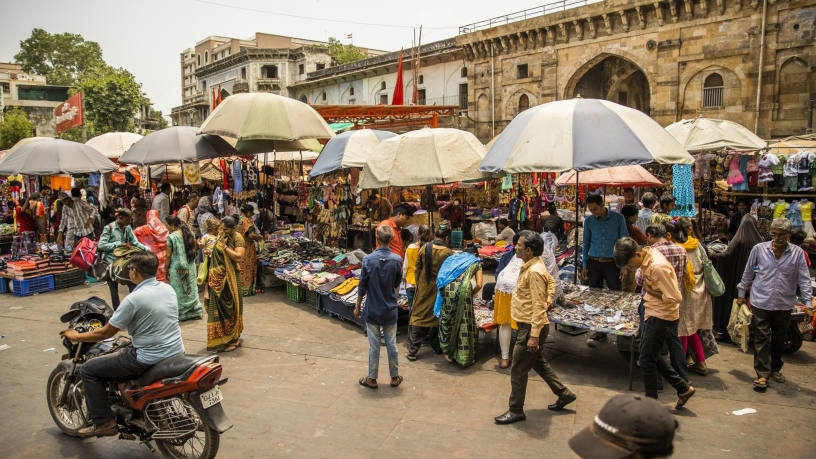While increasing financial inclusion is seen as an imperative by banks in Asia, the unbanked market has historically presented high risk and low returns. However, technologies such as blockchain are opening a less risky route to market by providing better data analytics on eligible customers.
“Banks are generally very concerned about tapping into ‘dubious’ markets where they are unsure of the creditworthiness of customers due to lack of information,” says Henry Choi, head of the sales group at detail for TMRW at the Singaporean bank UOB. TMRW is UOB’s standalone mobile bank.
“Without data, banks tend to be more conservative in ensuring they find only the right customer segments to focus on,” says Choi. “We engage partners from relevant ecosystems such as fintechs and e-commerce platforms to provide us with data so that we can be more precise when evaluating customers. »
Many banks in Asia are increasingly using tripartite partnership models – between banks, fintechs and regulators.
Banks have attempted to overcome the challenges facing Asia’s underbanked population by leveraging the region’s high smartphone penetration. They have integrated products and services through application programming interfaces to help customers fully automate processes such as loan distribution.
For example, in India, HSBC has worked with microfinance company Satin Creditcare to offer fully digital loans. APIs are used at every stage, covering beneficiary validation, bulk payment initiation and payment status inquiries, to ensure end-to-end real-time payment validation and processing.
Asia’s high digital penetration provides a cheaper way for banks to enter the market. According to UOB, in 2023, more than 50% of its total customer base in the Association of Southeast Asian Nations was acquired digitally through UOB TMRW. The number of customers who interacted with the bank digitally also increased from 58% in 2022 to 70% in August 2024.
“The return on investment in serving the underserved is low for a conventional bank with a high cost base and conventional business models,” says Alex Manson, managing director of SC Ventures – the fintech and innovation arm of Standard Chartered. “Banks need to use modern technology, i.e. data science and even blockchains eventually. »
Tokenization to open up asset classes
Emerging technologies such as blockchain are seen as a key tool for financial inclusion in Asia. In addition to changing the way payments are processed, blockchain lays the foundation for asset tokenization, which is being explored to open up asset classes and investment opportunities previously inaccessible to the underbanked.
“Through tokenization, banks can transform their assets into smaller pieces,” says Evy Wee, head of regional investment and investment solutions group at DBS Bank. “This will help those who cannot afford to pay a large lump sum upfront to invest in a single bond.”
“If traditional players do not make the effort to participate in these markets, customers will look for alternative options, which could lead to missed opportunities,” adds Wee.
Another blockchain use case that banks are exploring is increasing the financial inclusion of smaller businesses through supply chain finance. Particularly in the context of trade finance, blockchain technology – essentially an immediate, traceable and verifiable ledger – helps avoid double financing of receivables.
“Ultimately, if you take significant funding and make it more available, then one of the beneficiaries will be mom-and-pop stores that are currently underserved in large corporate supply chains,” says Manson.
Boon Hiong Chan, head of securities promotion and technology for the Asia-Pacific region at Deutsche Bank, says that “the unbanked market requires special capabilities and expertise, which includes the need for people on the who understand the borrowers and (micro, small and medium enterprises) and who would work with them.
For example, a specialized product could include banks providing microfinance without collateral or traditional bank guarantees, such as livestock or agriculture.
Specialization and education for inclusion
Financial inclusion has also been mainstreamed into national development programs in many Asian countries, fostering closer partnerships between government agencies and banks. In Thailand, the government issued savings bonds through a digital wallet in partnership with some of the largest banks earlier this year. Sources on the bond say the August tranche was fully subscribed within 30 seconds.
Despite the various innovations, financial inclusion products have been recognized by many banks as ineffective without the support of financial culture.
“Financial inclusion needs to be strongly accompanied by financial literacy training,” says Chan. “Focusing solely on financial inclusion without literacy, economic sustainability and affordability is woefully insufficient. »
Learn more
Visit our Sibos 2024 hub to find out more

